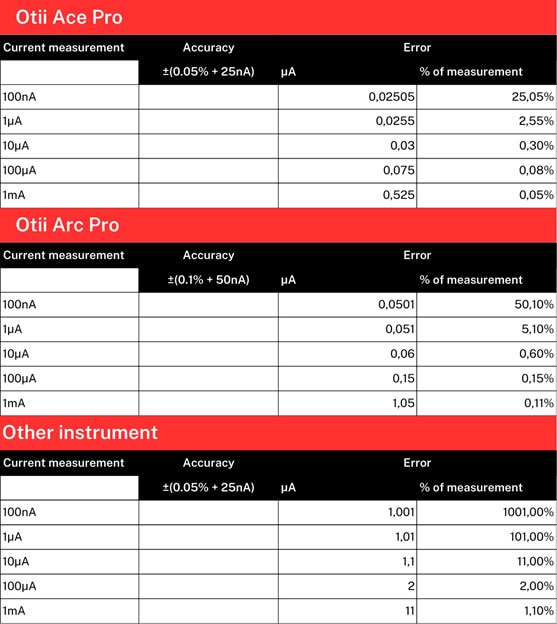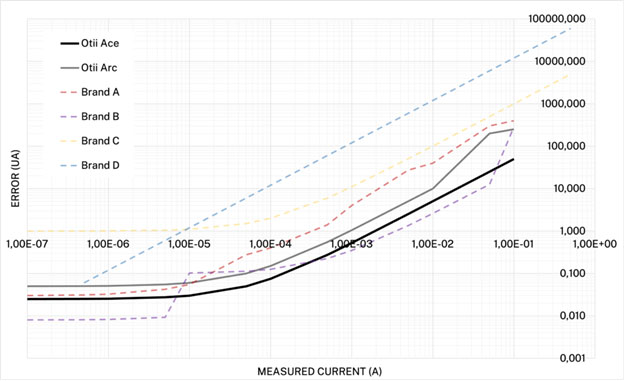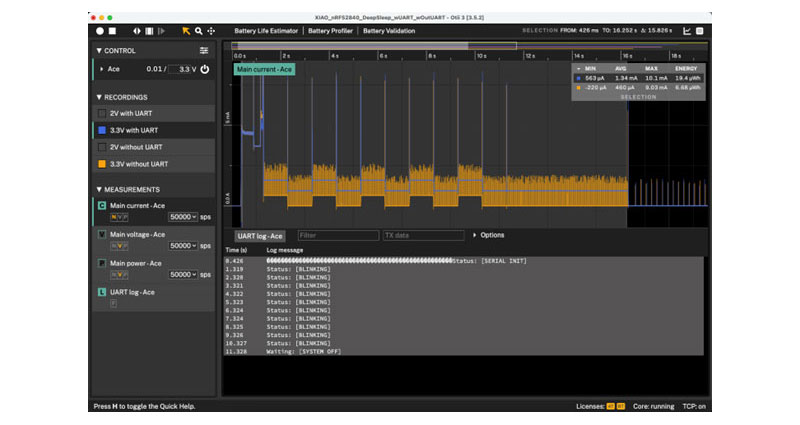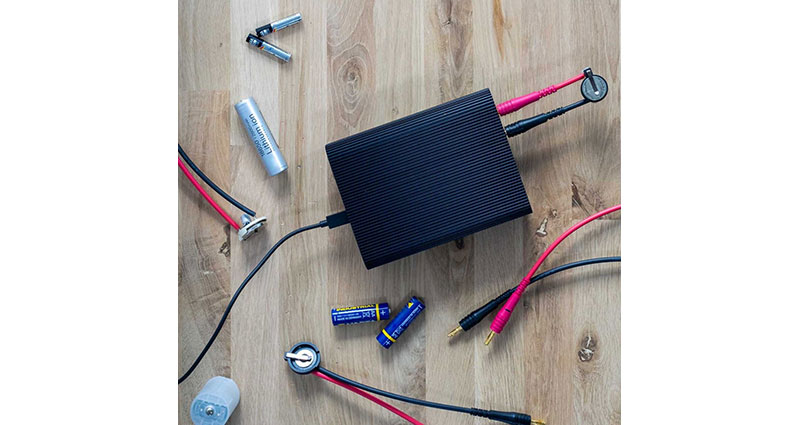Unlock Precision in Your Low Current Measurements – Why Accuracy Matters!
When developing low-power hardware solutions, accurate current measurement is critical for optimizing battery life and overall performance. To put this into practice, let’s compare the accuracy of two devices from Qoitech — the Otii Ace Pro and Otii Arc Pro—to a standard measurement tool commonly used in labs.
The Otii Ace Pro offers an accuracy of ±(0.05% + 25 nA), the Otii Arc Pro offers ±(0.1% + 50 nA), and typical instruments commonly offer ±(1% + 1 µA). Where the difference becomes evident is when measuring sleep currents in the microampere range.
Let’s say you need to measure a sleep current of 1 uA. Using the three instruments mentioned above results in the following:
- Otii Ace Pro → 1 µA ± 25.5 nA (0.05% of 1 µA is 0.5 nA, plus an additional 25 nA) = 25.5 nA
- Otii Arc Pro → 1 µA ± 51 nA (0.1% of 1 µA is 1 nA, plus an additional 50 nA) = 51 nA
- Standard measurement tool → 1 µA ± 1 µA (1% of 1 µA is 10 nA, plus an additional 1 µA) = 1010nA
These results make the latter instrument to not be very helpful when measuring a 1 µA sleep current. For a better understanding, see Figure 1 for the expected absolute errors when measuring current with the different instruments at different low current measurement accuracies.
 Figure 1: Expected absolute errors when measuring current with Otii Ace Pro, Otii Arc Pro, and a traditional measurement instrument, all with different low current measurement accuracies. (Image source: Qoitech)
Figure 1: Expected absolute errors when measuring current with Otii Ace Pro, Otii Arc Pro, and a traditional measurement instrument, all with different low current measurement accuracies. (Image source: Qoitech)
Looking across the whole measurement range, the accuracy will vary. It could be great accuracy for a small range of currents measured but also very inaccurate measurements for other ranges. Let’s see this with actual measurement errors–based on datasheets, across a wider range of current measurements, for multiple instruments on the market (Figure 2).
 Figure 2: Current measurement ranges and accuracies for various instruments and measurement boards available on the market. (Image source: Qoitech)
Figure 2: Current measurement ranges and accuracies for various instruments and measurement boards available on the market. (Image source: Qoitech)
What can we conclude? Well, it depends. When selecting a measurement instrument, it’s crucial to consider both short- and long-term needs by reviewing the accuracy across all ranges in the datasheet to understand its precision. You may need a highly precise instrument, meaning paying more for an outstanding feature (purple curve). Or, you are up to accept lower performance for a more affordable option (blue curve). Depending on your application, reasonable accuracy across a broad range of measurements, combined with features that enhance energy optimization, is sufficient.
Many instruments use auto-ranging to measure across a wide range of currents (from nA to A). But during the range switch, measurements may be inaccurate or unavailable, making it challenging to monitor dynamic loads where sleep currents can be in the single-digit µA range, and operational currents can reach hundreds of mA. The Otii Ace/Arc Pro reduces these issues by minimizing switching, performing it only once. This is enabled because they use a parallel higher-range measurement with a second shunt and analog-to-digital converter, allowing seamless range switch without data loss and ensuring continuous and accurate measurements.
So, next time you’re buying a current measurement instrument for your lab, make sure to validate the following:
- Understand the accuracy specifications: Pay close attention to the accuracy ratings in the instrument datasheet, including both gain and offset errors. These determine how reliable your measurements will be.
- Know your measurement needs: Clearly define the current ranges you need to measure. This helps you select an instrument that provides precision across your specific requirements, whether for low-power sleep states or high-current operations.
- Minimize range switching: Instruments that frequently switch between ranges can cause interruptions and inaccurate data. Opt for tools that reduce or eliminate range switching to ensure continuous, reliable measurements.

Have questions or comments? Continue the conversation on TechForum, DigiKey's online community and technical resource.
Visit TechForum








